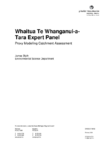-
Small earthworks guidelines - erosion and sediment control for small sites
The erosion of topsoil from vegetation
clearance and earthwork sites is a problem
throughout much of the Wellington
region.
The combination of high rainfall, hilly terrain,
clayey soil and underlying geology means that
if soil is…alarm Published 15 Jun 2006 -
Small earthworks Erosion and sediment control for small sites
The erosion of topsoil from vegetation
clearance and earthwork sites is a problem
throughout much of the Wellington
region.
The combination of high rainfall, hilly terrain,
clayey soil and underlying geology means that
if soil is…alarm Published 15 Jun 2006 -
Queen Elizabeth Park Management Plan 2006
This publication outlines the management plans and values
representing a common understanding between Greater
Wellington (GW) and the community. It guides GW in
making decisions about land…alarm Published 01 Jun 2006 -
Small Earthworks - Erosion and Sediment Control for Small Sites
Contractors carrying out earthworks now have a guide to avoid
damaging the environment. The Small Earthworks booklet is a
pocket-sized guide to preventing muddy water getting into a
stream or…alarm Published 01 Jun 2006 -
North Wellington Public Transport Study: Scenarios Report
This document identifies credible future public transport
scenarios for the northern suburbs and provides
background information to enable informed public
comment on options being considered.
In November 2005, Wellington City…alarm Published 01 Jun 2006 -
North Wellington Public Transport Study: Scenarios Technical Appendicies
The Scenarios Report presents credible future public transport
scenarios for the northern suburbs as part of the North
Wellington Public Transport Study This document provides
detailed information used in developing…alarm Published 01 Jun 2006 -
Safety Review of Birchville, Korokoro and Woollen Mills Dams - Issue 1
This report looks at the safety of three non-operational
old water dams; Birchville, Korokoro, and Woollen Mill,
and assesses the dams conditions, their structural
stability, the risk of failure, and the potential…alarm Published 01 Jun 2006 -
Small Earthworks - Erosion and Sediment Controls for Small Sites
This is a pocket guide to managing sediment on site for small-scale projects, such as building a retaining wall.
alarm Published 01 Jun 2006 -
Our region – their future
A discussion document on the review of the Regional Policy Statement for the Wellington Region
alarm Published 31 May 2006 -
Boulcott/Hutt Stopbank Feasibility Study - Newsletter 2
Greater Wellington Regional Council (GW) has brought
forward the start of the Boulcott/Hutt stopbank project
by one and half years and began investigations into
options for a new stopbank in…alarm Published 02 May 2006


